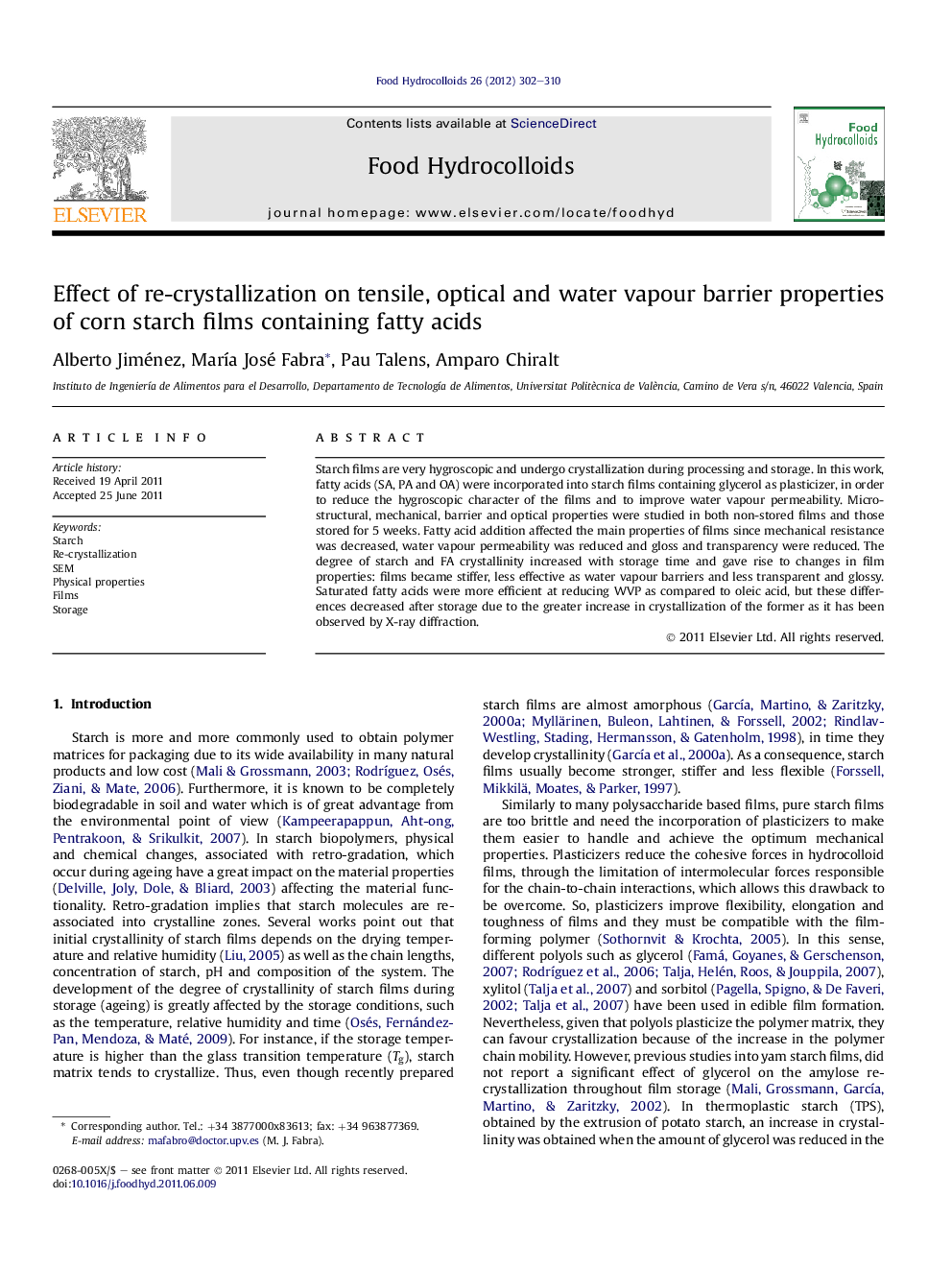| Article ID | Journal | Published Year | Pages | File Type |
|---|---|---|---|---|
| 605009 | Food Hydrocolloids | 2012 | 9 Pages |
Starch films are very hygroscopic and undergo crystallization during processing and storage. In this work, fatty acids (SA, PA and OA) were incorporated into starch films containing glycerol as plasticizer, in order to reduce the hygroscopic character of the films and to improve water vapour permeability. Microstructural, mechanical, barrier and optical properties were studied in both non-stored films and those stored for 5 weeks. Fatty acid addition affected the main properties of films since mechanical resistance was decreased, water vapour permeability was reduced and gloss and transparency were reduced. The degree of starch and FA crystallinity increased with storage time and gave rise to changes in film properties: films became stiffer, less effective as water vapour barriers and less transparent and glossy. Saturated fatty acids were more efficient at reducing WVP as compared to oleic acid, but these differences decreased after storage due to the greater increase in crystallization of the former as it has been observed by X-ray diffraction.
Graphical abstractFigure optionsDownload full-size imageDownload as PowerPoint slideHighlights► In this work, the influence of fatty acids on the microstructural and physical properties of starch films was analyzed, in both newly prepared films and those stored for 5 weeks. ►Crystallization of film components during storage was analyzed through X-ray diffraction. ► The degree of crystallinity of the matrix increased during storage time, which implied an increase in the film stiffness and brittleness and a loss of stretchability, gloss and transparency, which was also induced by lipid incorporation into non-aged films.
